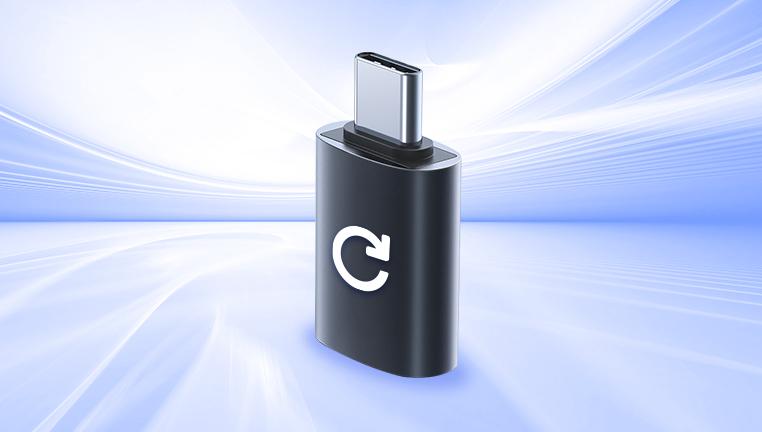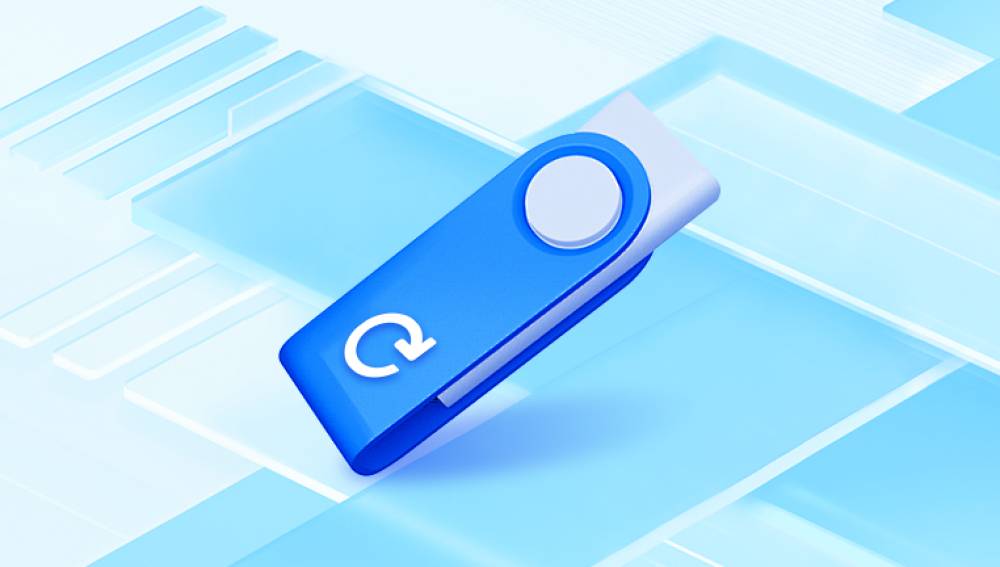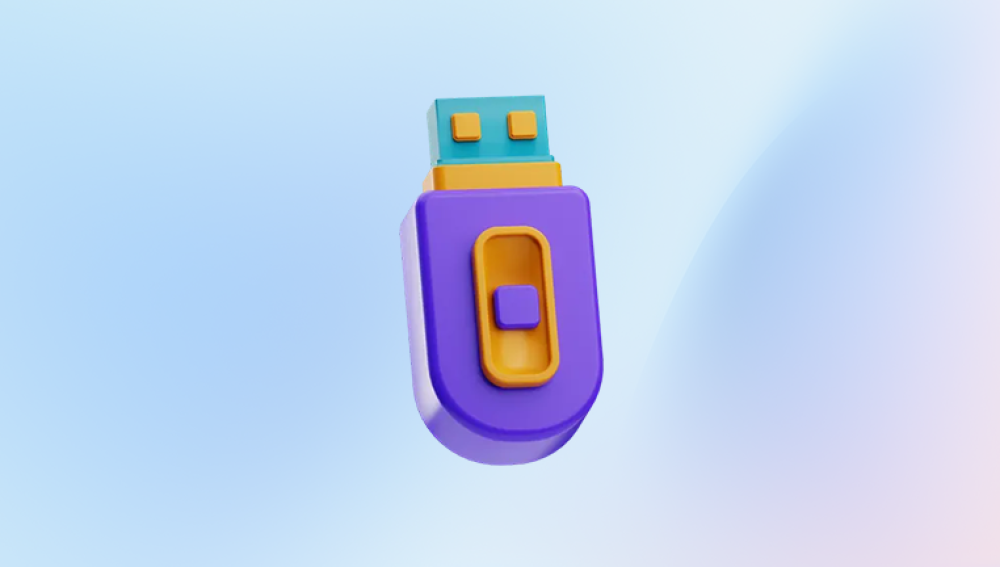There are several potential reasons why files could go missing from a USB drive.
1. Accidental Deletion
It's possible that the files were accidentally deleted, either by you or by a software glitch. Deletions can sometimes happen without being fully noticed, especially if the files were deleted in bulk or through an automated process.
2. Corrupted File System
USB drives rely on a file system (FAT32. exFAT, NTFS, etc.) to manage and store data. If the file system becomes corrupted, the files may still be physically present on the drive but the operating system can't read them, resulting in the files appearing to be missing. This often happens if the drive was removed improperly, or if there was a sudden power loss or system crash while data was being written.

3. Drive Partition Issues
Sometimes, the drive may have multiple partitions, and the partition containing your files might not be mounted or detected by your computer. This can make it seem like your files are missing, even though they are still on the drive.
4. Drive Formatting
If the drive was inadvertently formatted, it will erase all of the files, but not the underlying data until it gets overwritten. If you formatted the USB drive and didn't perform a full wipe, it’s possible to recover the files using specific tools.
5. Virus or Malware
Malicious software can cause files to disappear or become inaccessible. This often happens when malware hides the files from view or locks them in an encrypted format. In some cases, malware can even modify the file system, making files appear missing.
6. Driver Issues
If the USB drivers on your computer are out of date or corrupted, the system may fail to read the USB drive properly, which can lead to files not showing up. This is particularly common when connecting USB devices across multiple computers or operating systems.
7. Hardware Failure
A failing USB drive or issues with the USB port or cable can lead to data loss. If your drive is physically damaged or malfunctioning, files may be inaccessible or lost.
Steps to Troubleshoot Missing Files on a USB Drive
Now that you understand the potential reasons for missing files, let's dive into the steps you can take to troubleshoot and recover your files.
1. Check for Hidden Files
In some cases, files may still be on the drive, but they are hidden from view. You can check for hidden files by following these steps:
Windows: Open File Explorer, go to the "View" tab, and check the box that says "Hidden items."
Mac: Open Finder, press Command + Shift + . (dot) to show hidden files.
2. Try the USB Drive on Another Computer
Sometimes, the issue could be with your computer’s USB ports or settings. Plug the USB drive into a different computer and see if the files are visible. This can help rule out driver issues or computer-specific problems.
3. Check the USB Drive for Errors
If the drive's file system is corrupted, you can run a disk check to repair it. Here's how to do it:
Windows:
Open “This PC” or “My Computer.”
Right-click the USB drive and select "Properties."
Under the “Tools” tab, click “Check” under Error Checking.
Mac:
Open Disk Utility.
Select the USB drive in the sidebar and click "First Aid."
Click "Run" to repair the drive.
4. Check Disk Management or Disk Utility
If the drive isn't showing up properly, it might not be mounted or recognized by the system. Use the built-in disk management tools to check for unrecognized partitions:
Windows: Right-click the Start menu, select "Disk Management," and check if the USB drive appears. If the partition shows as unallocated, you may need to create a new partition.
Mac: Use "Disk Utility" to check if the USB drive is recognized and mounted. If not, try mounting it manually.
5. Run Data Recovery Software
Drecov Data Recovery software is designed to scan and recover lost files from a variety of storage devices, including USB drives. It works by searching for remnants of deleted or corrupted files on your drive and making them accessible again. Here’s a brief guide on how to recover missing files using Drecov Data Recovery:
Download and Install Drecov Data Recovery: Start by downloading the software from Panda’s official website and install it on your computer. Make sure you install it on a drive that isn't your USB to avoid overwriting any lost data.
Select the USB Drive: Once installed, open the program and select the USB drive where the files were lost.
Scan for Lost Files: Choose the type of scan you want to perform—quick or deep—and let Drecov Data Recovery search for missing files. The deep scan is more thorough but takes longer.
Preview and Recover Files: After scanning, Panda will show a list of recoverable files. Preview the files and select the ones you wish to recover. Save them to a different drive to avoid overwriting the data on the USB.
6. Contact a Professional Data Recovery Service
If the software recovery options don’t work or the USB drive is physically damaged, it may be time to contact a professional data recovery service. These services can help recover data from physically damaged drives, including those with broken connectors, damaged circuits, or severe file system corruption.
Professional data recovery services can be expensive, but they are often the last resort when other options fail.
Preventing Future Data Loss from USB Drives
While recovering missing files is possible, it's always best to prevent data loss in the first place. Here are some tips to help you avoid similar issues in the future:
1. Backup Regularly
Regular backups are essential to ensuring that your data is safe, even if your USB drive fails. Consider using cloud storage (like Google Drive, Dropbox, or OneDrive) or an external hard drive to back up important files. For automatic backups, tools like Acronis or Windows Backup can be helpful.
2. Eject USB Drive Properly
Always eject your USB drive safely by using the “Safely Remove Hardware” option in Windows or macOS. Removing the drive without ejecting it properly can cause data corruption.
3. Use a Reliable USB Drive
Not all USB drives are created equal. Cheap or poorly manufactured drives are more likely to fail over time. Invest in a high-quality USB drive from a reputable brand, and ensure that it has good read/write speeds and durability.
4. Scan for Malware
Regularly scan your USB drive for malware and viruses, especially if you've used it on multiple computers. Malware can corrupt files, hide them, or even delete them.
5. Handle USB Drives with Care
Physical damage is a common cause of data loss, so be mindful of how you handle your USB drives. Avoid dropping them or subjecting them to extreme temperatures or moisture.




